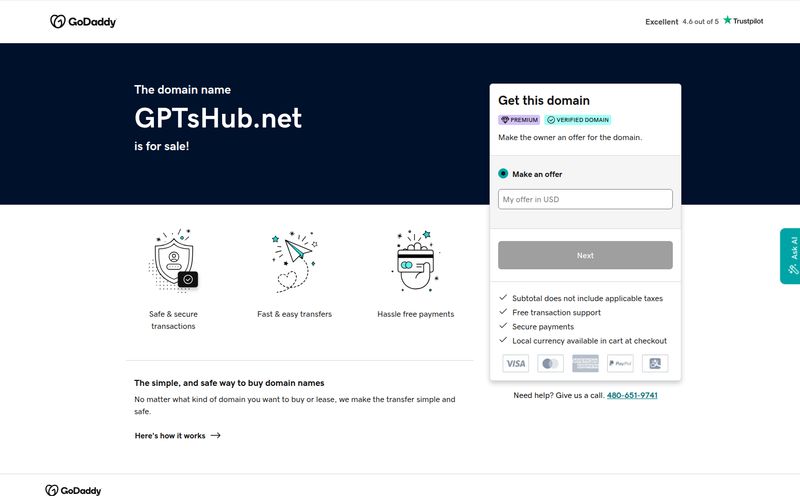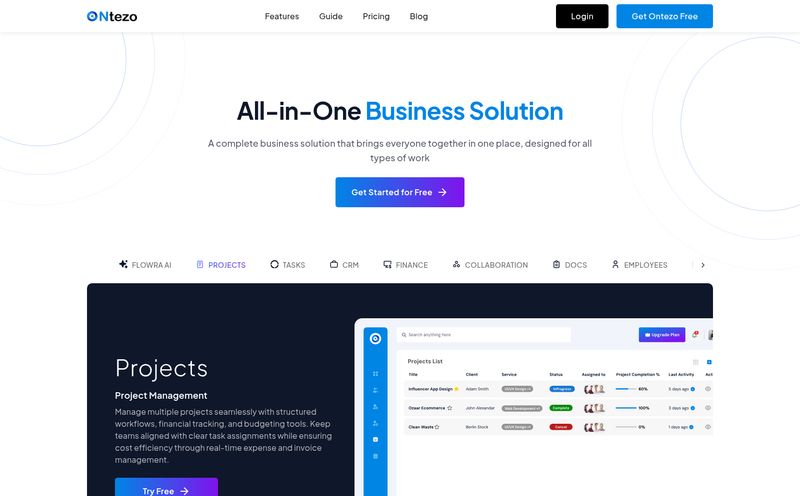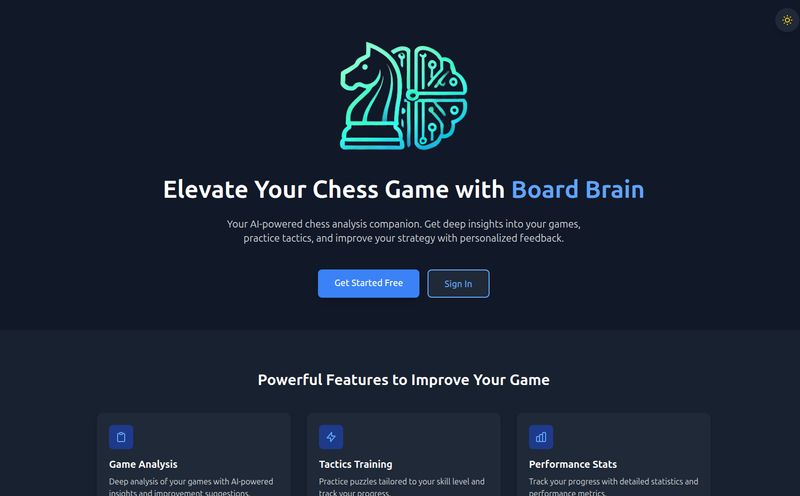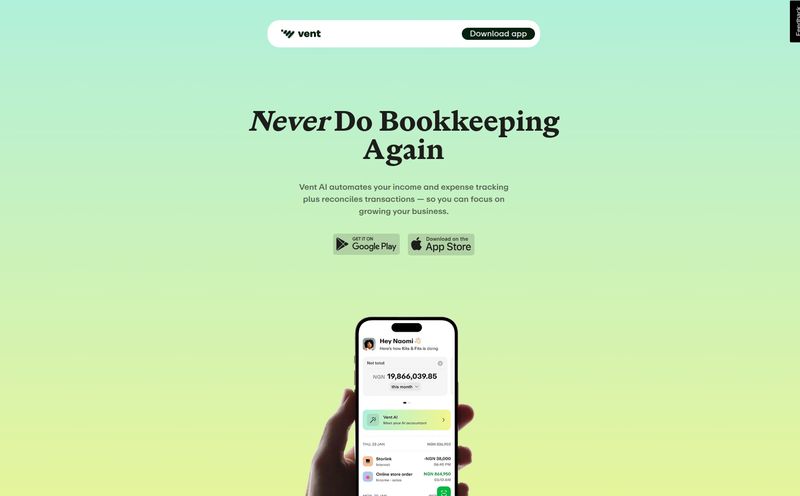I’ve always been one of those people who has intensely weird dreams. You know the type. One night you’re flying over a city made of jelly, the next you’re trying to find your car keys while a friendly badger gives you terrible life advice. For years, my dream journal was a messy, ink-stained notebook on my nightstand, filled with half-lucid scribbles I could barely decipher in the morning.
We’ve all been there, waking up with the ghostly remnants of a dream, thinking, “What on earth was that about?” Traditionally, you’d either forget it, tell a confused partner about it, or maybe flip through a dusty dream dictionary from the 90s to find out that dreaming of teeth falling out means you’re anxious. Groundbreaking, I know.
But we live in the age of AI. It’s writing our emails, creating our art, and now, it’s coming for our subconscious. I recently stumbled upon an app called DreamStory, and as a guy who geeks out over SEO, traffic, and the patterns behind human behavior, the idea of applying data analysis to my own brain-movies was too good to pass up.
What Exactly is DreamStory?
So, what is this thing? At its core, DreamStory is an AI-powered dream journal and interpretation app. Think of it as a high-tech version of that messy notebook, but with a built-in Carl Jung who has a PhD in data science. The app claims to use its own advanced AI, which they call “DreamGPT 2.0,” to analyze your dreams, uncover hidden meanings, and help you improve your self-awareness.
It’s not just about giving you generic symbol definitions. The whole point is to look at your specific dream narrative, track recurring themes, and connect them to your emotional state. It's a bold promise, turning the ephemeral, often chaotic world of dreams into actionable personal insights.
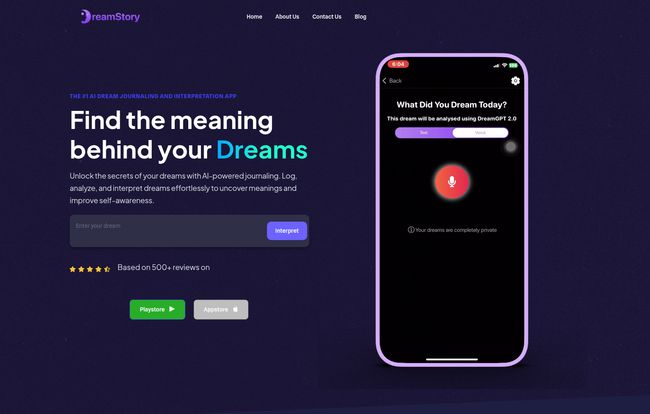
Visit DreamStory
How It Works: The 3-Step Journey to Your Subconscious
The process is refreshingly simple, which is a massive plus when you’re still half-asleep. The whole thing boils down to three steps.
- Journal Your Dream: The moment you wake up, you can grab your phone and either type out the dream or—and this is my favorite feature—just speak it. The voice-to-text is a lifesaver. No more fumbling with a tiny keyboard while the details of your badger-therapist slip away. You just talk, and it captures the story.
- Let the AI Do Its Thing: This is where the magic (or the algorithm, rather) happens. You hit a button, and DreamStory’s AI gets to work. It sifts through your narrative, identifying key symbols, actions, characters, and the overall emotional tone.
- Grow Yourself: A few moments later, you get a detailed interpretation. It breaks down the potential meanings, points out patterns you might have missed, and gives you food for thought. The goal isn’t to give you a definitive “this means that,” but to act as a prompt for your own reflection.
The Features That Made Me Look Twice
I’ve seen a lot of wellness apps, and many are just fluff. But a few of DreamStory’s features felt genuinely thoughtful and set it apart from a simple digital diary.
More Than Just an Interpreter: Emotional Well-Being
This is the big one for me. DreamStory assigns an “emotional score” to your dreams. It monitors whether your dreamscape is generally positive, negative, or neutral. Over time, you can see this trend in a chart. Did your dreams get more stressful during that big project at work? Did they become more peaceful after you started a new meditation practice? This transforms your dream journal from a collection of weird stories into a legitimate mood tracker. It's like having a passive data stream straight from your subconscious, reflecting your mental state.
Taming Your Inner Demons: Nightmare Tracking
We all get nightmares, but for some people, they are a recurring source of dread. DreamStory has a specific function for tracking and managing nightmares. By logging them, the AI can help you identify common triggers or themes. The testimonial from one user, Sarah M., stuck with me: "I've had recurring nightmares since I was a child. DreamStory helped me see the patterns and understand the root cause. My sleep has improved so much." Giving users a tool to confront and understand their nightmares, rather than just fear them, is a powerful application of this technology.
Chasing Unicorns and Flying: Lucid Dreaming Support
On the flip side, the app also mentions features to help you achieve lucid dreaming. For the uninitiated, that’s the state of being aware that you’re dreaming while inside the dream. It’s a fascinating field, and by consistently journaling and recognizing your personal dream signs (or “tells”), you can train your brain to become conscious mid-dream. It’s a bit of a niche interest, but its inclusion shows the developers are thinking about the full spectrum of dream experiences.
My Honest Take: The Good, The Bad, and The AI
Alright, so after playing around with it, what's the verdict? Like any tool, it's not perfect, but it's pretty impressive.
The user experience is fantastic. It’s slick, fast, and the voice input is a game-changer. The true strength, in my opinion, lies in its ability to discover recurring patterns. I might not notice that a certain person or symbol has appeared in three of my dreams this month, but the AI does. It serves these patterns up to you, forcing you to ask, “Huh, why do I keep dreaming about my old high school gym?” It’s this bird's-eye view of your own mind that you can’t get from a single dream alone.
Now for the caveats. It’s crucial to remember that this is a guide, not a gospel. The interpretations, while often insightful, are generated by an AI. They are a starting point for your own introspection, not a replacement for a professional therapist. If you’re dealing with serious mental health issues, this app can be a cool supplemental tool, but it shouldnt be your primary source of support.
And then there's the price. The best features, like the advanced AI analysis and unlimited journaling, require a subscription. This is pretty standard for high-quality apps these days. I did get a bit confused trying to find the specifics—the pricing page on their website seemed to be dreaming of being an AI content writing tool, listing word counts and templates. A funny little mix-up. So, for the most accurate pricing, you’ll want to check the App Store or Google Play listing directly when you download.
Who is DreamStory Really For?
So, who should download this? I see a few key groups.
- The Self-Exploration Enthusiast: If you're into journaling, meditation, or any form of self-improvement, this is right up your alley. It's a new dataset for understanding yourself.
- The Creative Soul: Writers, artists, and musicians could find a goldmine of inspiration in the bizarre imagery of their own dreams, neatly logged and analyzed.
- The Data-Driven Individual: If you love tracking your steps, your sleep, and your screen time, why not track your subconscious? It’s the ultimate personal metric.
- The Simply Curious: If you just wake up wondering what your dreams mean, this is an infinitely more interesting tool than a generic web search.
It’s probably not for the hardcore skeptic who believes dreams are just random neural firings, nor is it, as I said, a substitute for professional mental healthcare.
Frequently Asked Questions About DreamStory
How does DreamStory interpret my dreams?
DreamStory uses an advanced AI model (dubbed "DreamGPT 2.0") that has been trained on a massive dataset of dream symbols, psychological theories, and narrative structures. It analyzes the text of your dream for themes, emotions, characters, and objects to provide a personalized interpretation based on your specific story.
Is DreamStory free to use?
The app offers some basic features for free, but to get the most accurate and private AI interpretations, you'll need a subscription. They mention this is required for the advanced analysis. You should check the app's listing on your device's app store for the latest pricing and trial information.
Can it really help with my recurring nightmares?
Yes, this is one of its highlighted features. By consistently logging your nightmares, the app helps you and its AI identify recurring patterns, symbols, or situations. This understanding is the first step toward managing the anxiety or stress that may be causing them.
Is my dream journal private and secure?
According to their homepage and general best practices for such apps, privacy is a key concern. The subscription model often supports enhanced privacy features. However, always be sure to review the app's privacy policy before inputting sensitive personal information.
Is this a replacement for therapy?
Absolutely not. The app itself states that its interpretations are a guide and not a replacement for professional advice. It's a tool for self-discovery and can be a great conversation starter with a therapist, but it is not a medical or therapeutic device.
Final Thoughts on My Digital Dream Catcher
In a world saturated with apps that promise to optimize every corner of our lives, DreamStory feels... different. It’s not about being more productive or efficient. It's about turning inward. It takes one of the most mysterious and personal parts of being human—our dreams—and uses modern technology to help us listen a little more closely.
It's a fascinating bridge between the ancient art of dream interpretation and the bleeding edge of artificial intelligence. While no algorithm can ever fully capture the beautiful, terrifying, and nonsensical magic of the human mind, DreamStory does a surprisingly good job of holding up a mirror to it. And sometimes, that's all you need to start understanding what you see.
Reference and Sources
- The official DreamStory website: dreamstory.ai
- An article on the benefits of dream journaling from the Sleep Foundation: Why You Should Keep a Dream Journal
- Information on lucid dreaming from Healthline: How to Lucid Dream: 6 Techniques to Try
